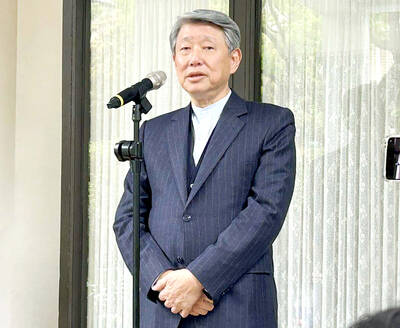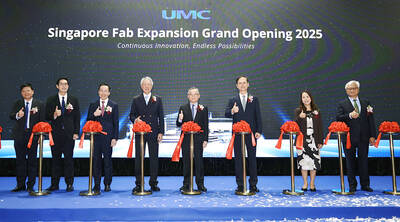China’s central bank has published details on its latest tool to provide liquidity as it refrains from across-the-board cuts to benchmark interest rates.
The People’s Bank of China confirmed it pumped 769.5 billion yuan (US$126 billion) into the nation’s lenders in the past two months through a newly created medium-term lending facility (MLF).
The central bank injected 500 billion yuan in September and 269.5 billion yuan last month via the facility — all termed at three months with an interest rate of 3.5 percent.
The announcement, included in the bank’s quarterly monetary policy statement, is the first official confirmation of earlier reports of the injections.
Goldman Sachs Group Inc said every 500 billion yuan in funds from the central bank is approximately equal to a 50 basis point cut in the required reserve ratio.
The move “affected mid-term interest rates, while providing liquidity to guide commercial banks to lower their lending rates and overall social-financing costs,” the central bank said in the report published yesterday.
“As liquidity generated from capital inflows eases, MLF has played a role of covering the liquidity gap, and maintaining a neutral and appropriate liquidity situation,” the central bank added.
The facility is the latest unconventional liquidity tool as the Chinese central bank joins the European Central Bank on a path of easing, even as the US begins the shift to a more normal monetary policy.
The expansion builds on targeted steps to support growth in Asia’s largest economy, while stopping short of broad-based monetary loosening and fiscal stimulus, that could raise debt risks and the risk of bad loans.
Last year, the central bank introduced the standing lending facility (SLF), a tool similar to the discount window at the US Federal Reserve and the marginal lending facility at the European Central Bank, to provide short-term liquidity to banks.
The Chinese central bank did not use the SLF in the third quarter, with the outstanding value at zero as at the end of September, it said.
China will continue to implement a “prudent” monetary policy and use various tools to manage liquidity, the PBOC said. The central bank has left reserve requirements for the largest banks and benchmark interest rates unchanged for more than two years.

MULTIFACETED: A task force has analyzed possible scenarios and created responses to assist domestic industries in dealing with US tariffs, the economics minister said The Executive Yuan is tomorrow to announce countermeasures to US President Donald Trump’s planned reciprocal tariffs, although the details of the plan would not be made public until Monday next week, Minister of Economic Affairs J.W. Kuo (郭智輝) said yesterday. The Cabinet established an economic and trade task force in November last year to deal with US trade and tariff related issues, Kuo told reporters outside the legislature in Taipei. The task force has been analyzing and evaluating all kinds of scenarios to identify suitable responses and determine how best to assist domestic industries in managing the effects of Trump’s tariffs, he

TIGHT-LIPPED: UMC said it had no merger plans at the moment, after Nikkei Asia reported that the firm and GlobalFoundries were considering restarting merger talks United Microelectronics Corp (UMC, 聯電), the world’s No. 4 contract chipmaker, yesterday launched a new US$5 billion 12-inch chip factory in Singapore as part of its latest effort to diversify its manufacturing footprint amid growing geopolitical risks. The new factory, adjacent to UMC’s existing Singapore fab in the Pasir Res Wafer Fab Park, is scheduled to enter volume production next year, utilizing mature 22-nanometer and 28-nanometer process technologies, UMC said in a statement. The company plans to invest US$5 billion during the first phase of the new fab, which would have an installed capacity of 30,000 12-inch wafers per month, it said. The

Taiwan’s official purchasing managers’ index (PMI) last month rose 0.2 percentage points to 54.2, in a second consecutive month of expansion, thanks to front-loading demand intended to avoid potential US tariff hikes, the Chung-Hua Institution for Economic Research (CIER, 中華經濟研究院) said yesterday. While short-term demand appeared robust, uncertainties rose due to US President Donald Trump’s unpredictable trade policy, CIER president Lien Hsien-ming (連賢明) told a news conference in Taipei. Taiwan’s economy this year would be characterized by high-level fluctuations and the volatility would be wilder than most expect, Lien said Demand for electronics, particularly semiconductors, continues to benefit from US technology giants’ effort

‘SWASTICAR’: Tesla CEO Elon Musk’s close association with Donald Trump has prompted opponents to brand him a ‘Nazi’ and resulted in a dramatic drop in sales Demonstrators descended on Tesla Inc dealerships across the US, and in Europe and Canada on Saturday to protest company chief Elon Musk, who has amassed extraordinary power as a top adviser to US President Donald Trump. Waving signs with messages such as “Musk is stealing our money” and “Reclaim our country,” the protests largely took place peacefully following fiery episodes of vandalism on Tesla vehicles, dealerships and other facilities in recent weeks that US officials have denounced as terrorism. Hundreds rallied on Saturday outside the Tesla dealership in Manhattan. Some blasted Musk, the world’s richest man, while others demanded the shuttering of his